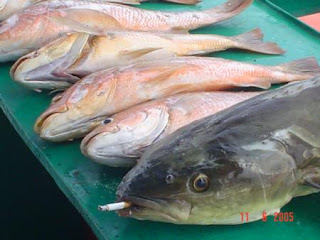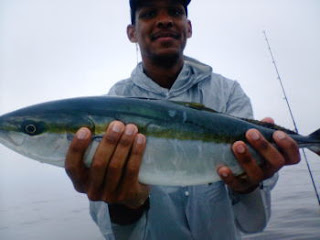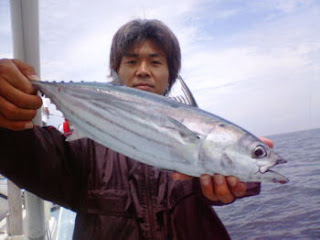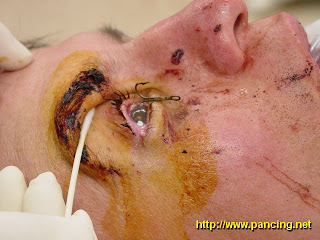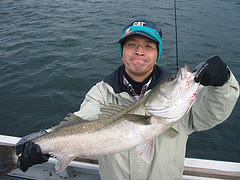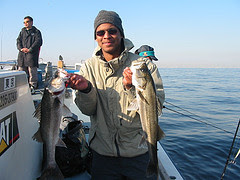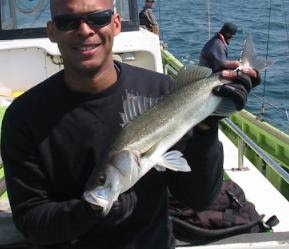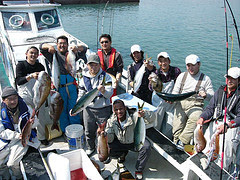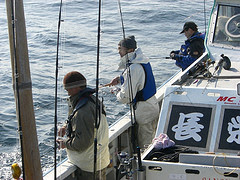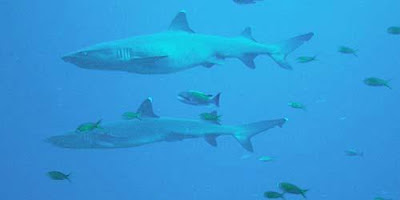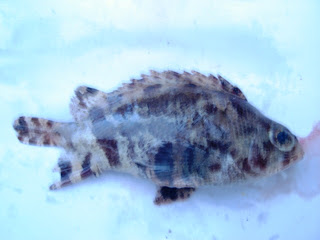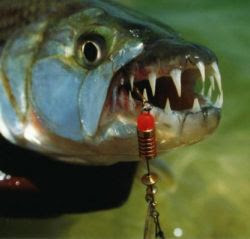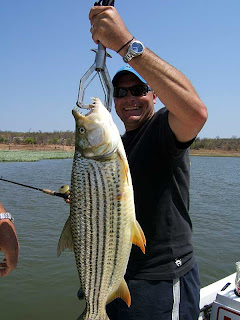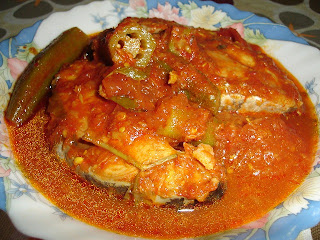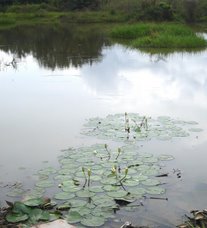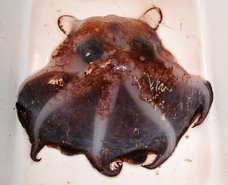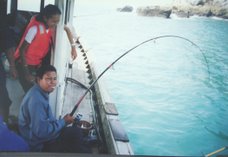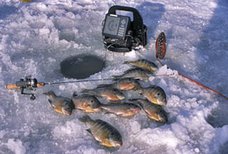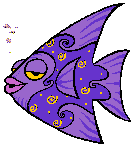What's New from Grand Canyon
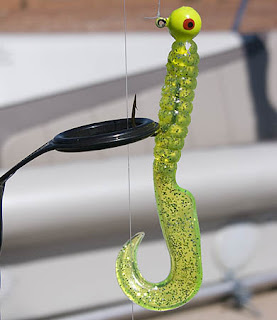


We spent 5 days on the water, from April 12th to the 17th. Thursday and Friday had some off weather and wind, but with good times in between. We fished at the mouth of Moki, and did fairly well during the day, and even better at night. Luckily the wind died down at sunset, which made for relaxed, non-stop fishing. The stripers at the mouth are a 65/35 split of young ideal fish and starved non-filletable fish. And an occasional walleye, but not many. Saturday we went up to Knowles, and spent the night. Mid day seemed least windy and most fishable. Didn't catch much in Knowles, but graphed a lot of fish.
Sunday we went down to Forgotten, and spend the afternoon in the first, short arm. Took time to catch up on filleting, which took a few hours. Afterwards caught a dozen skinny stripers, and a few small smallies in the rock piles. Went to the central arm (towards defiance house) and caught some crappie in the back (in the trees). We hiked to defiance house and saw the only shad I've seen on the lake... they were up the dry creek bed about a mile from the end of the water, in a small clear pool. Guess the stripers chased them too far into the back of the canyon... !! There were about a dozen young shad, one adult, and unfortunately one tiny LMB about the same size as the small shad. Hopefully the mom shad will teach it to be a vegetarian, so his brothers and sisters don't become lunch one day. I'd rather see a dozen shad take to repopulating than one LMB have a lunch. Was pretty wild to find them so far away from the lake.
Sunday night we night fished in Forgotten, as I had graphed a school as we came in, right across from the first (short) arm. There is a place near shore where the water comes up to 30-40 feet, and with calm wind we were able to anchor on the fairly smooth bottom. All fish were the same size... small. They were a little smaller then the moki fish, but still a good size to fillet. We caught probably 40 before calling it a night, due to wind eventually blowing us off our anchorage (26' tritoon with double bimini=a lot of wind drag).Monday we went back to Moki and tried to fish in the afternoon and evening, but the wind persisted so we didn't night fish. We only caught maybe a dozen stripers in the afternoon. This was the first time I caught fish by speed reeling, using a chartreuse grub cast out, worked along the bottom, and then quickly reeled back. Caught 4 nice small stripers in succession this way.
The hydro glow night light brought in tons of plankton, but no shad. Most of the fish we caught were on my special rig, consisting of two #2 hooks (#2 proved to be the best sized hook to catch both large and small fish) about a foot apart, and then another foot down to a chartreuse grub on a 1/4 oz jig head. We fished predominantly with anchovies the whole trip. Sherm has conveyed to me how much he prefers fishing with x-raps and other shallow cranks, which seems to be a much more exciting way to fish, but I have yet to get into fish that way. I guess I get too comfortable fishing with bait. And he has done pretty good on chartreuse grubs in the past... Also, of the stripers we caught, it was a pretty even mix between picking up fish on the chovies or the green grub.
Some other guys fishing at the mouth were only using the green grub, but were chumming profusely. Monday seemed to need more chum to bring the fish in than usual. I cut the chum into as small a pieces as I could, to increase surface area of the chum (more scent) and also so that the only large and satisfying pieces they would find would have a hook attached.
Tuesday was much nicer, calm and warm weather. We fished again at the mouth of Moki, in our usual spot, the first cove on the right as you are going in. We tried fishing in the deep water in the middle of the canyon but couldn't find any fish. At the mouth we probably caught another 30 fish before heading back to bullfrog, most of them really nice sized small stripers. They are by far the best to eat.Lili caught the biggest striper of the trip, probably weighing in at around 10-12 lbs. The bigger fish seem to go for the grubs on the bottom more than the chovies a little higher up.
Camping in Moki I tossed in a line for catfish and came up with a few channel cats, and this odd one. I caught this fish twice on two occasions. Not sure what species it is...?
The three coolers-full were from the course of the trip (same 240 qt. mega cooler). Anyone looking for a good fish cooler should get this one... it's an igloo max cold 7 day cooler. Found it at costco for around $80. It holds PILES of fish, has a raised top to hold more fish, and has a convenient smaller hatch for dropping fish in without opening the main lid, keeping cold and flopping fish from escaping.All in all, further up the lake wasn't producing as much (for us), and Moki seems to be a consistent place to catch ideally-sized stripers. We probably ended up with 150-200 stripers in all. Viva la Shad!

